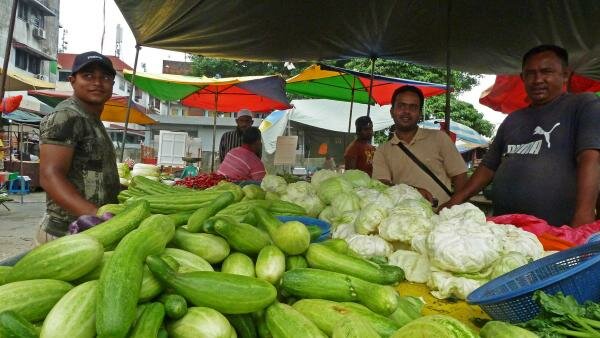Boosting Cities' Food Resilience
Asia's largest cities need to maximize every bit of space to feed one of the world's fastest-growing populations.
 From rooftops to railroad tracks, Asia's largest cities will need to maximize every bit of space to feed one of the world's fastest-growing populations, said experts at a UN Food and Agriculture Organization (FAO) workshop in Bangkok on resilient food systems in Asia.
From rooftops to railroad tracks, Asia's largest cities will need to maximize every bit of space to feed one of the world's fastest-growing populations, said experts at a UN Food and Agriculture Organization (FAO) workshop in Bangkok on resilient food systems in Asia.
"Food-sensitive urban planning is now a necessity," said Mariko Sato, chief of the Asia regional office of the UN Human Settlements Programme (UN-HABITAT).
Although fewer people live in cities than in Asia's rural areas - approximately 43 percent - the UN projects an 89 percent increase in the region's urban population (1.6 billion people) by 2050.
Asia had 12 megacities of more than 10 million people each, half the world's population and the second-fastest rate of urbanization worldwide as of 2010, according to the UN Economic and Social Commission for Asia and the Pacific (ESCAP).
Feeding this expanding urban population will be a "challenge" due to the widespread lack of land tenure and access to cash and markets - and the resulting lack of incentive to farm - as well as insufficient rural-to-urban food transport and storage, said Brian Roberts, an Australia-based urban management specialist from the Centre for Developing Cities at the University of Canberra.
In addition, farmers may not have market information about what urbanites prefer and produce blindly without diversifying, he added. "Growing food to meet the needs of the population will be a struggle."
Growing recognition
The FAO launched its food for the cities initiative in 2000, but it was not until 11 years later that the group published its position paper.
"Since [the] 2008 [food price riots], people have started to realize urban food security is a very big deal. Not enough attention had been paid beforehand," said Paul Munro-Faure, FAO's principal officer in the climate, energy and tenure division, who chairs the initiative.
Tools to assess poverty have traditionally focused on the countryside, said Carla Lacerda, a programme officer with the World Food Programme (WFP) regional office for Asia, who added that FAO and WFP were working to create urban assessment and intervention tools.
Less than 10 percent of WFP Asia emergency programming, including cash vouchers, is focused on cities, she said.
"It is hard to target hunger in cities because urban issues are intricate. It is easier for humanitarian agencies to get into, but harder to come out because [the issues] are mostly about development and government responsibilities."
Additional challenges include the risk of luring rural dwellers away from depressed economies and degrading farms with urban food programmes; overlapping with agencies pursuing development goals; the increased difficulty of supporting livelihoods in cities rather than rural areas; and the challenge to measure impact due to scattered living arrangements, said Lacerda.
More than half of the world's population that goes hungry (fewer than 2,100 kilocalories per day) - or 642 million people - live in the region.*
Official rates of urban poverty trail that of the countryside in the region's three most populous countries (China, India and Indonesia), according to ESCAP, but the situation is changing, said FAO's Munro-Faure.
"Food security is not only a rural producers' problem... The rural-urban divide is really a continuum and we must take on board urban populations."
The two-day FAO workshop concludes on 18 November.

















